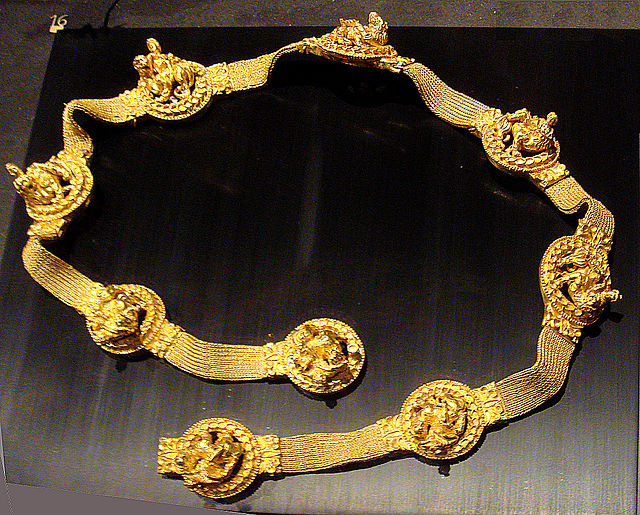Ancient history of Afghanistan
The ancient history of Afghanistan, also referred to as the pre-Islamic period of Afghanistan, dates back to the Helmand Civilization around 3300–2350 BCE and the Oxus Civilization around 2400–1950 BCE. Archaeological exploration began in Afghanistan in earnest after World War II and proceeded until the late 1970s during the Soviet–Afghan War. Archaeologists and historians suggest that humans were living in Afghanistan at least 50,000 years ago, and that farming communities of the region were among the earliest in the world. Urbanized culture has existed in the land from between 3000 and 2000 BC. Artifacts typical of the Paleolithic, Mesolithic, Neolithic, Bronze, and Iron ages have been found inside Afghanistan.
Bird-headed man with snakes; 2000–1500 BC; bronze; 7.30 cm; from Northern Afghanistan; Los Angeles County Museum of Art (USA)
The Achaemenid Empire under the rule of Darius the Great (522–486 BC)
Administrative document from Bactria dated to the seventh year of Alexander's reign (324 BC), bearing the first known use of the "Alexandros" form of his name.
Coin of the Greco-Bactrian king Eucratides (171-145 BCE)
Afghanistan, officially the Islamic Emirate of Afghanistan, is a landlocked country located at the crossroads of Central Asia and South Asia. Referred to as the Heart of Asia, it is bordered by Pakistan to the east and south, Iran to the west, Turkmenistan to the northwest, Uzbekistan to the north, Tajikistan to the northeast, and China to the northeast and east. Occupying 652,864 square kilometers (252,072 sq mi) of land, the country is predominantly mountainous with plains in the north and the southwest, which are separated by the Hindu Kush mountain range. Kabul is the country's largest city and serves as its capital. According to the World Population review, as of 2023, Afghanistan's population is 43 million. The National Statistics Information Authority of Afghanistan estimated the population to be 32.9 million as of 2020.
Tents of Afghan nomads in the northern Badghis province. Early peasant farming villages came into existence about 7,000 years ago.
A "Bactrian gold" Scythian belt depicting Dionysus, from Tillya Tepe in the ancient region of Bactria
Portrait of Ahmad Shah Durrani c. 1757
Afghan tribesmen in 1841, painted by British officer James Rattray








